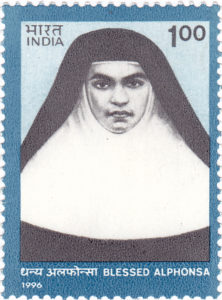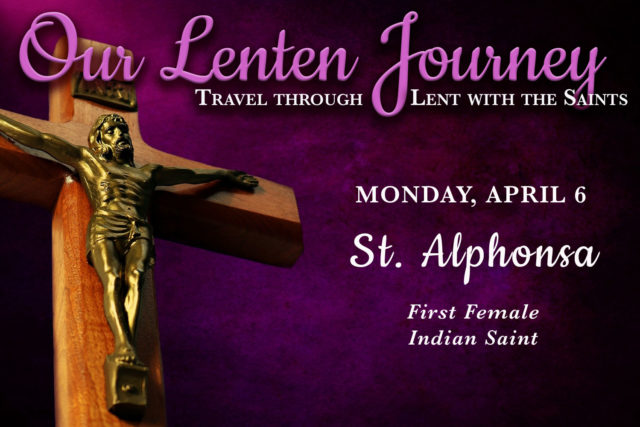Annakkutty, as she was called, lived a life of suffering but offered it up to the glory of God. Not only did she lose her mother as an infant, she also suffered from painful physical ailments most of her adult life but hundreds of miracles of healing have been attributed to her from those who have sought her intercession. Meet St. Alphonsa, the first woman of Indian origin to be canonized.
She was born Anna Muttathupadathu on Aug. 19, 1910 into a Syro-Malabar Catholic family. The youngest of five, her mother died not long after she was born and Anna was raised by extended family. She was nicknamed Annakkutty (little Anna). Her grandmother took her to church often and the child developed a deep devotion to God at an early age. She emulated St. Therese of Lisieux and said later in life that St. Therese appeared to her in a vision and told her she would one day be a saint.

Anna was very beautiful and came from a prominent family, so she was considered a desirable match for marriage. An ambitious and unkind aunt schemed repeatedly to arrange marriage for the young girl, but Anna insisted that she wanted to join a religious congregation instead.
When she was a teenager, Anna stepped into a hot pit and her feet were badly burned. It may have been an accident, but some stories say she stepped onto the hot chaff intentionally in an effort to reduce her attractiveness and thwart her aunt’s matchmaking efforts. Finally, her father convinced Anna’s aunt to step down her efforts and he allowed his daughter to enter religious life.
Anna entered a third order group of the Congregation of the Franciscan Clarists to complete her education. She worked hard toward fulfilling her steps to final vows to religious life, but since the burn incident, she was afflicted constantly with other illnesses.
In 1906, it was thought that she was healed of her many ailments by Kuriakose Elias Chavara (who was later beatified the same day she was.) The period of wellness after this healing helped Anna advance to her final vows and become Sister Alphonsa.
However, her good health did not last long. Despite her desire to be a teacher, Sister Alphonsa later battled malaria and pneumonia and missed much time teaching. To complicate matters, she was attacked during a break-in at the convent, and added amnesia to her ailments. She also developed serious gastrointestinal issues that caused violent vomiting. Finally, on July 28, 1946, she succumbed to the physical toll that had been taken on her body and died at age 35.
Although she lived a simple and pain-filled life, she brought grace to others after her death. Hundreds of miracles have attributed to her, especially healing of ailments of the feet, because of her own damaged feet. The two miracles presented for her cause for canonization were both cures for children who had clubfeet.
St. Alphonsa was canonized on Oct. 12, 2008. Her feast day is July 28.
St. Alphonsa is the first woman of Indian origin to be canonized. India celebrated her beatification by issuing a stamp with her likeness in 1996.
She is the patron of diseases related to feet, and the Cherupusha Mission League, India.
Her shrine is one of the most visited in India. Learn more about it here:
Her prayer can be found here:
http://www.syromalabarchurch.in/saints.php?saintname=saintalphonsa&page=prayers








